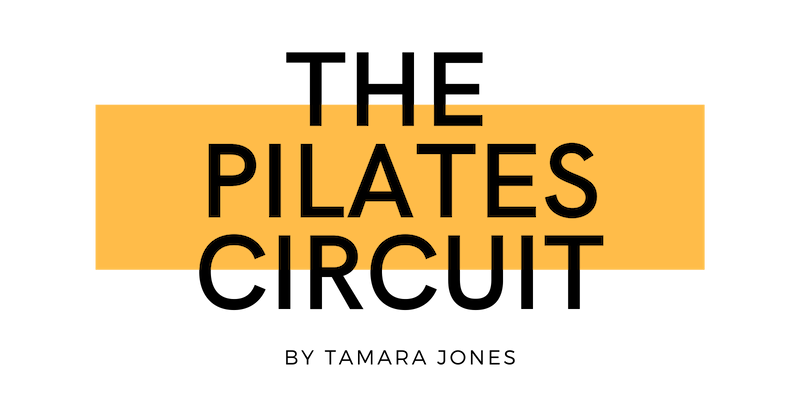Is Pilates Strength Training (Everything You Need to Know)
You might wonder, "Is Pilates strength training?" Pilates can fit into your overall fitness and strength-building goals.
Exploring the Basics of Pilates
Pilates focuses on controlled movements, flexibility, and core strength. It is practiced on a mat or with specialized equipment, such as the Reformer.
The exercises improve body alignment, balance, and overall fitness.
Is Pilates Strength Training?
Pilates' emphasis on controlled movements, flexibility, and core strength builds muscle and enhances overall strength.
How Pilates Builds Muscle and Enhances Strength
Slow, deliberate movements, core engagement, and increased resistance and complexity over time yield toned muscles and improved overall strength.
Comparing Pilates to Traditional Strength Training
Traditional strength training involves lifting heavy weights and exercises like squats, deadlifts, and bench presses.
Pilates emphasizes core stability, flexibility, and balanced muscle development, compared to the isolated muscle targeting of traditional strength training.
RELATED: 6 Benefits of Pilates for Men
The Role of Equipment in Pilates Strength Training
Pilates strength training utilizes specialized equipment to enhance the effectiveness of exercises.
Utilizing Reformer and Other Pilates Apparatus
The Pilates Reformer provides resistance through springs, pulleys, and a sliding carriage. The exercises target different muscle groups and enhance strength.
The Cadillac, Wunda Chair, and Spine Corrector offer additional resistance and support for exercises that would be difficult on a mat alone.
Mat Pilates for Strength: Effective or Not?
Mat Pilates relies solely on body weight and gravity for resistance. The muscular control and endurance required for exercises like the Pilates Hundred, Teaser, and Plank prove that mat Pilates is effective for building strength.
RELATED: Does Pilates Tone Your Body?
Pilates for Different Fitness Levels
Pilates can be adapted to meet the needs of both beginners and advanced practitioners.
Adapting Pilates for Beginners and Advanced Practitioners
Pilates' adaptability makes it suitable for all fitness levels. Beginners can start with basic exercises to build foundational strength and flexibility and gradually progress to more challenging movements.
Advanced practitioners can incorporate complex sequences and increase resistance to build strength and muscle.
Integrating Pilates into Your Strength Routine
Integrating Pilates into your strength routine and combining it with weight training can yield optimal results.
Combining Pilates with Weight Training for Optimal Results
While weight training focuses on building muscle mass and increasing overall strength, Pilates enhances core stability, flexibility, and muscular endurance. Integrating the two can lead to a well-rounded fitness routine that maximizes strength and functional fitness.
Is Pilates Enough for Strength Training Alone?
Pilates is effective in building core strength and stabilizing muscles. If the goal is substantial muscle growth or peak strength improvements, it may not replace the need for traditional weight training.
However, Pilates alone can be sufficient to improve overall fitness, core stability, and muscle tone.
Beyond Strength: Additional Benefits of Pilates
Pilates offers numerous additional benefits beyond building strength.
Flexibility, Posture, and Core Stability Enhancements
Pilates significantly enhances flexibility, improves posture, and promotes core stability. These benefits contribute to overall physical health and can prevent injuries, making Pilates a comprehensive fitness regime.
Making the Decision: Is Pilates Right for Your Strength Goals?
Whether Pilates is the right choice for your strength goals depends on your specific needs and objectives. Pilates can be an excellent addition to your fitness routine to improve core strength, flexibility, and muscle tone.
Transform your fitness journey with private 1x1 Pilates in New York. At The Pilates Circuit, we specialize in personalized one-on-one training tailored to your unique goals. Whether you're improving posture, building strength, or enhancing mobility, our expert instructors are here to guide you every step of the way.
Book an intro session to experience how targeted training can make a difference in your life. Choose from our Chelsea Private Pilates Studio or NOMAD Pilates Studio for a welcoming and focused environment.
FAQs
-
Strength training in Pilates helps build muscle, increase metabolism, improve body composition, and enhance overall fitness and functional movement.
The Reformer and Tower springs add weight (much like strength training in the gym). That weight allows us to develop real strength and resistance in our training. It’s not just flexibility and core work; you’ll get a full-body workout.
-
Other common equipment besides the Pilates Reformer includes resistance bands, Pilates rings, stability balls, and dumbbells. The Reformer achieves 90% of the resistance that we need, and then we add some fun props to build on it.
-
Ultimately, the ideal frequency will vary depending on your personal goals, but it is important to find a balance that works for you and prioritizes recovery.
You can aim to add around 2 - 3 sessions per week, incorporating them into your overall fitness routine for optimal results.
-
Yes, Pilates-based strength training can aid in weight loss and muscle toning when combined with a balanced diet and regular exercise.
Pilates-based strength training exercises target multiple muscle groups simultaneously, helping to increase muscle mass, which in turn can increase calorie burn.
-
Feeling sore after a Pilates workout can vary depending on your fitness level, the intensity of the workout, and the specific exercises performed. While some muscle soreness can be normal, especially if you're challenging your body with new movements, it shouldn't be excessive or debilitating.
If you're experiencing severe or persistent soreness, it could be a sign that you're overdoing it or not performing the exercises with proper form.
We aim for a little soreness, but the better your recovery (food, sleep, rest), the less soreness you should experience.
Meet Tamara – Your Pilates Expert
Hi! I’m Tamara, a Certified Pilates Instructor and founder of The Pilates Circuit in NYC. With 9+ years of experience, I specialize in results-driven, athletic Pilates to improve posture, core strength, and overall wellness. Whether you're recovering from diastasis recti or leveling up your fitness, I’m here to guide you every step of the way!
Find us on Instagram:


